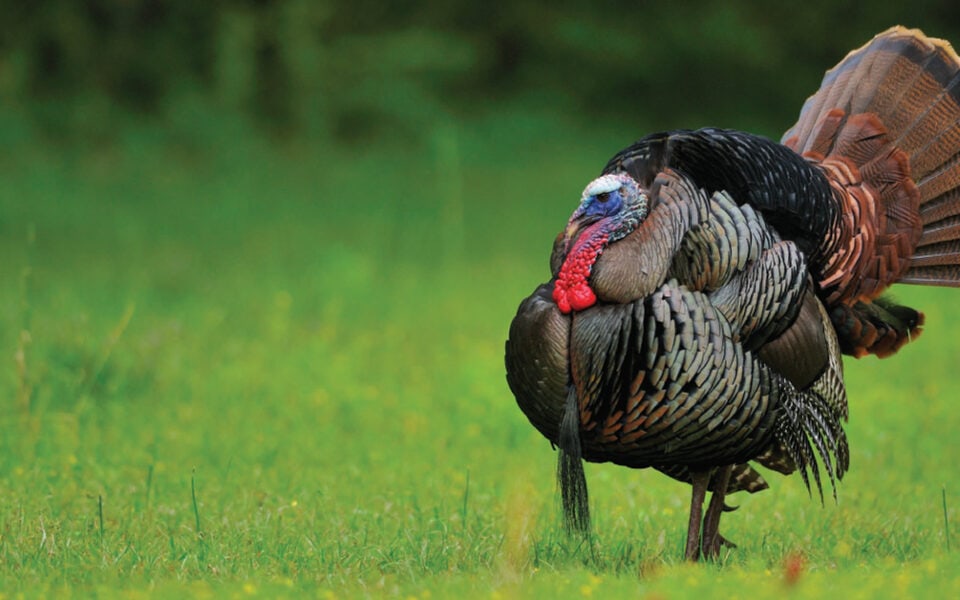Ask most any experienced turkey hunter and they can quickly rattle off the names of the four subspecies or races of wild turkey recognized by The National Wild Turkey Federation for purposes of their Grand Slam. A fair number could probably add a fifth for the North American Slam and a sixth for the World Slam. For those not already familiar with all the wild turkey subspecies, they are as follows:
Eastern Turkey
The Eastern is the largest and most widespread race, occurring in every state east of the Mississippi River and along the length of the river’s western side, as well as eastern portions of several plains states and Texas. They are the largest (heaviest) race, sport the longest beards and are best distinguished by chestnut brown tips of their tail feathers and tail coverts. They’re strong, deep-throated gobbles are symbolic of the wild turkey.
Osceola
The Osceola (or Florida) turkey has the narrowest range, occurring only in central and south Florida. They closely resemble Easterns except they tend to be leaner with longer legs, and their primary wing feathers have heavy black barring, as opposed to Eastern where the black-white barring is more even. Their gobble is essentially indistinguishable from an Eastern.
Rio Grande
The Rio Grande’s range spans roughly from Kansas, south through Texas and into Northeastern Mexico, with transplanted populations in California and Oregon (and Hawaii). They are best distinguished by the tan tips of their tail feathers and tail coverts. Their gobble is noticeably different from that of Eastern and Osceola, being more high-pitched and warbly.
Merriam’s
The Merriam’s is scattered across parts of Arizona, New Mexico, up through the mountain states into Nebraska, the Dakotas, and along the Washington, Oregon and Idaho borders. It is best distinguished by the light buff to white tail band and coverts, and showing more white than dark banding in the primaries. While similar to the Rio, its gobble is even higher pitched and softer.

Those are the general guidelines, but for every rule there are exceptions. A century ago, much of what is now their current range was unoccupied by wild turkeys. Thanks to the efforts of state wildlife agencies and NWTF volunteers, turkeys have been restored to most of their historical range through trap and transfer programs. But the folks conducting those efforts weren’t too particular about where their birds came from, as long as they were wild birds. As a result, current subspecies distribution is not nearly as distinct as it once was.
In general, the variance is local or regional. For example, Massachusetts’ turkeys came from New York, and Maine’s came from Vermont and Connecticut, but variability is all over the map.
Alabama provides an interesting example. In areas that were repopulated with transplants, the turkeys resemble those in neighboring states. But in areas where the native stock was never extirpated, turkeys look more like Osceola turkeys, with slim bodies and long legs. Some think these birds and Osceolas are representative of a true southeastern strain. Then there are more glaring exceptions. The most extreme is probably Washington, where you can find Eastern, Rio Grande and Merriam’s.
While man played the predominant hand, some of the racial integration was and still is done by the birds themselves, mostly where the geographical range of subspecies overlap. There, you’ll find a lot of hybridization. In east-central Kansas, for example, you may find birds that gobble like Easterns but look more like Rios, and vice versa. And they tend to be among the largest. Nebraska and South Dakota have hybridization of Eastern and Merriam’s.
Occasionally there’s just no explanation for what you observe. I hunted a ranch south of San Antonio where we shot birds that had that silly little girl, laughing gobble of a Rio Grande, but looked like Easterns, with brown tail bands and coverts. And on a single hunt in western Nebraska I killed three birds, one resembling an Eastern, one a Rio and the third looked pure Merriam’s.
Because translocation and hybridization have led to so much diverse integration, taxonomists tend to ignore subspecies or races and simply lump them all under one species. The lines on a map distinguishing subspecies range are largely just that, lines on a map. However, they do serve as geographic boundaries for purposes of recording your Grand Slam. To my knowledge, Texas is the only state has separate regulations for different subspecies (but I could be wrong about that.)









